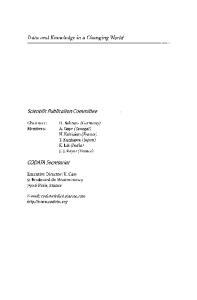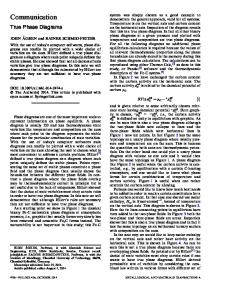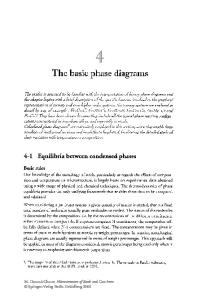Computation of Temperature-Pressure Phase Diagrams of High-Pressure Nitrides
- PDF / 100,733 Bytes
- 6 Pages / 612 x 792 pts (letter) Page_size
- 57 Downloads / 374 Views
0987-PP01-02
Computation of Temperature-Pressure Phase Diagrams of High-Pressure Nitrides Peter Kroll Inorganic Chemistry, RWTH Aachen, Landoltweg 1, Aachen, Germany
ABSTRACT We propose an explicit scheme to include the fugacity of nitrogen in computations of phase diagrams of nitride compounds at high-temperature/high-pressure conditions. The assessment is based on available thermochemical data and two kind of extrapolating functions to provide upper and lower boundary for the fugacity coefficient as a function of p and T. The procedure is applied to investigate the synthesis of novel nitrides of tantalum, tungsten, and platinum. The combination of first-principle and thermochemical calculations let us predict the synthesis of a new high-pressure phase of Ta3N5 at about 27 GPa. Synthesis of WN2 becomes feasible at about 45 GPa. We furthermore explain why the synthesis of the noble metal subnitride, PtN2, occurs at about 40 GPa, and why PtN is not accessible in high-pressure experiments. INTRODUCTION Advances in instrumentation of diamond-anvil-cells and multi-anvil-cells provided the environment for recent chemical syntheses of novel nitride compounds at high-pressure/hightemperature conditions [1,2]. Using a diamond-anvil cell allows chemical synthesis at 100 GPa while resistive- and laser-heating techniques enable a controlled simultaneous heating from a few hundred to several thousand degrees. Furthermore, tremendous advances have been made in theory and computation of materials. With the advent of density-functional theory it became possible to compute reliably structure and energy of existing and hypothetical phases. In the mutual interplay of solving problems in high-pressure research experiment and computation play leap-frog: sometimes the experiment is in advance, sometimes the computation. Most often, however, the use of both methods is indispensable to verify and confirm a new high-pressure modification. Motivated by the simultaneous discovery of spinel-type silicon nitride by experimental and computational methods [3] we set out to study more binary nitride compounds of main-group elements and transition metals [4,5]. However, out study on the nitrides of hafnium and zirconium opened some substantial shortcoming of the standard procedure: for one, a lowpressure modification of Hf3N4 had never been realized. So we were faced to compute the reaction enthalpy of a nitridation of mononitride HfN at high-pressures and (!) temperatures. Secondly, the novel Zr3N4 was not realized by compressing the known ambient pressure modification of Zr3N4. Instead, it was also prepared through excellent high-temperature/highpressure chemical synthesis [6]. Moreover, the synthesis happen at a pressure significantly above the computed transformation from low- to high-pressure modification of Zr3N4 [7].
We escaped the dilemma of being bound to composition-conserving high-pressure phase transformations by including the temperature and pressure dependence of the free enthalpy of nitrogen into our equilibrium conditions [5].
Data Loading...











